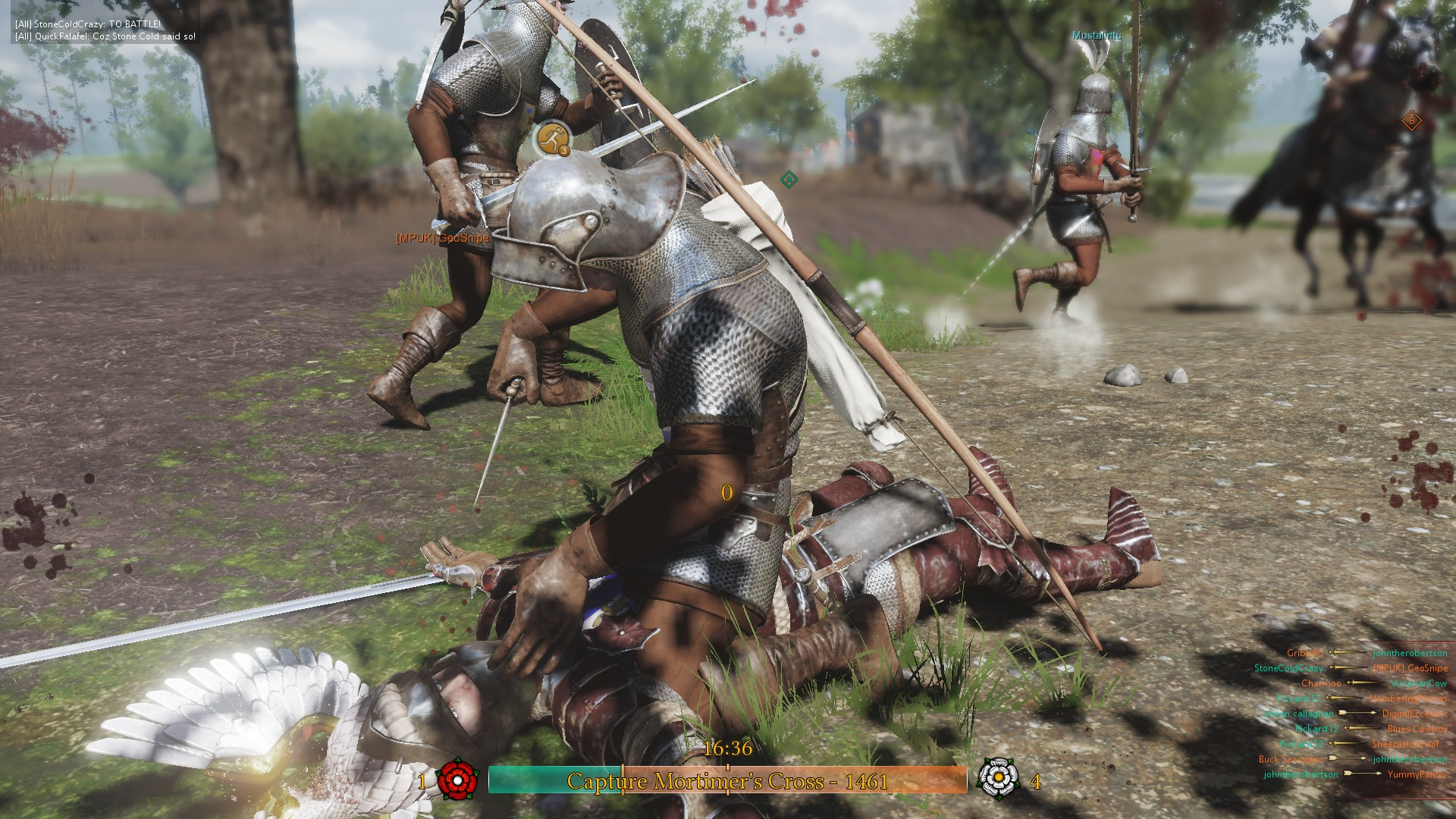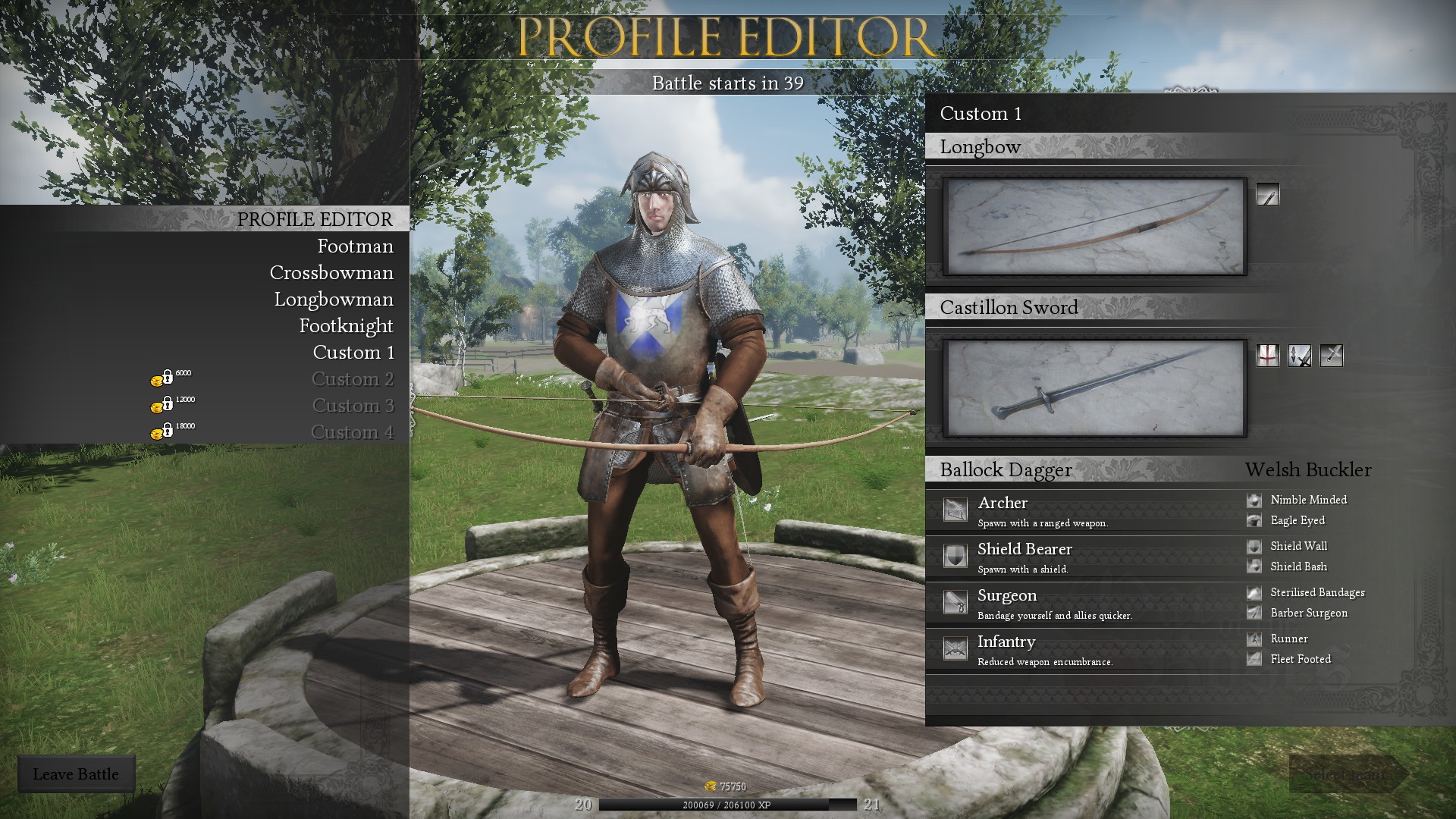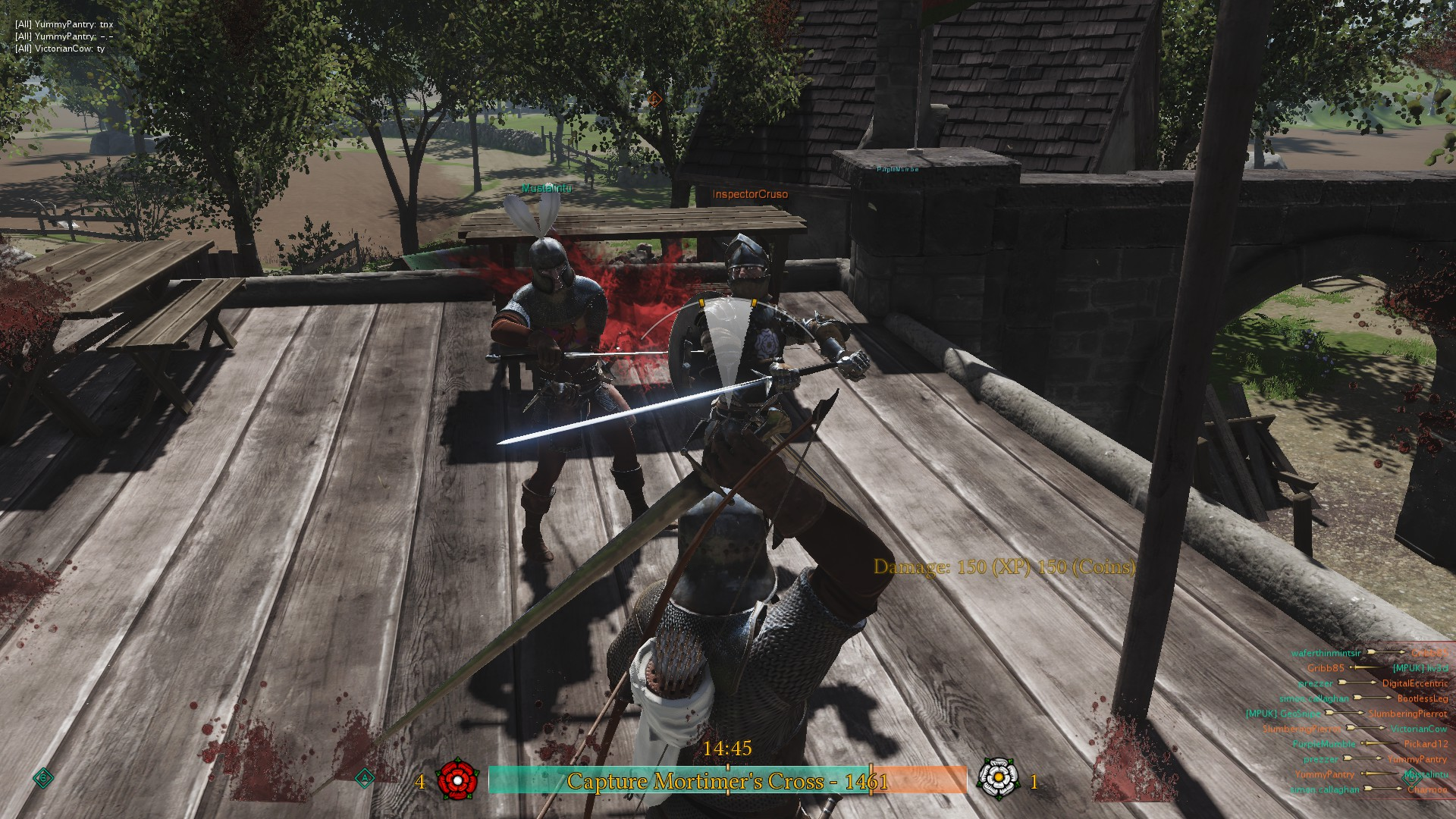War of the Roses Review
When I first heard about the development of War of the Roses, I thought that the game would be pompous and difficult to understand, too focused on the accurate simulation of medieval weaponry and the details of warfare at that time. I thought that the controls would be too cumbersome. I thought that the level of difficulty would be excessive.
Well, the game does take weaponry and armor quite seriously, and it takes some time to get used to the controls, but both of these aspects give the game its uniqueness and do not hinder having a fun time, showing other warriors what real medieval times were like. And their horses too.
Two teams, with a maximum of 32 people each, dress up in ancient armor and choose weapons from a wide range of halberds, swords, axes, spears, bows, and crossbows. When they clash on the battlefield and swing for a strike, the effect will depend on the characteristics of the weapon, the location of the hit, and the type of armor in that area. For example, a slashing weapon won’t penetrate a steel breastplate, but a precise strike between the plates will do its job. It’s easy to guess that maneuvering, timing, and careful blocks play a crucial role here – or a multitude of desperate strikes in all directions when you’re already bleeding.
Movement is done with the standard WASD keys, and the strength and direction of the strike are determined by the mouse. Clicking only initiates the attack, then you need to swing in the desired direction and release the button to strike. To block, the right mouse button is held down, and the shield is shifted towards the incoming attack that needs to be parried. No one forbids you from holding the button to constantly be in a block or ready to attack at the desired angle.

It will take some time before you get used to the fact that you don’t have to move the mouse all over the table to swing – a small movement in the right direction is enough. Timing also requires practice – certain fractions of a second are needed to draw the bowstring or swing the axe. But it is still a good control system and you quickly get used to it. Very soon you will feel yourself in the midst of a surprisingly realistic battle, advancing towards the enemy to strike, stepping back to raise your shield, and slowly stepping forward in anticipation of their attack.
Ranged combat also requires effort. Crossbows take monstrously long to reload, while archers only need a second to steady their trembling hands. Projectiles travel slowly and in an arc, so when aiming at distant enemies, you need to aim higher, and don’t expect to hit a moving target without extensive practice.
Perhaps my description makes the game seem more measured than it actually is, so I can say – yes, War of the Roses rewards direct experience, nimble timing, and precise strikes, but despite all this, the game is very dynamic, and death does not make you wait long. One or two good strikes will bring down even the strongest knight, wounded players have only a few seconds to bandage themselves, and archers, those annoying campers, become easy prey when they encounter your hammer. By the way, when a player is defeated, they don’t immediately leave the game.
Instead, they lie motionless, waiting for help or a finishing blow. To finish off a fallen opponent, you need to spend a few seconds performing a gruesome execution – and if you are the defeated player, you have to helplessly watch as you are brutally killed. If your teammate reaches you first, they can revive you and bring you back into the fight, but if there is no one to wait for help from, you can surrender and respawn in a few seconds, spending your points.

Engagements bring additional dynamics. Spending a few seconds to kill or assist in the midst of battle is a serious risk. You become vulnerable to both nearby enemies and sharpshooters, and many failed executioners fall alongside their intended victims. A wounded warrior can become the cause of death for their comrades or bait for the enemy.
At first, you don’t have access to the abundance of local weaponry, and you are forced to play as a simple foot soldier. However, as you gain experience in battles, you will be able to unlock three other classes: archer, crossbowman, and knight in heavy armor. These classes will allow you to try out new equipment, and various perks will help customize your character to your liking after a few battles.
This game only makes you contemplate the characteristics after some time – and that’s how it should be. It serves as a reminder that your success is primarily based on your actions in battle, not on equipment combinations. However, no one stops you from spending countless hours exploring the local arsenal.
Here, there is not only a multitude of weapons, helmets, and types of armor; there are also different frames for shields, different blades for swords, and even different wood for pole weapons. Obviously, the larger the weapon, the slower it is and the higher the damage it inflicts. Additionally, their size can become a hindrance in confined spaces – in such cases, a fighter with a halberd looks like a street sweeper with a broom.
If I were a little lazier, I would call this game “Battlefield with swords”: a third-person multiplayer action game about close combat, where you have to poke each other with spears or shoot arrows to get a bigger spear or sharper arrows. Although this is a fairly accurate description overall, it hinders the appreciation of the originality of War of the Roses. Fatshark invented a new control system to create a new type of battles and a unique gaming experience. Overall, they succeeded in doing so, largely thanks to the absence of unnecessary seriousness.

Sometimes everything here looks downright funny. Chains of defeated “executioners” lying next to enemies who were never defeated. Novice knights stealing each other’s horses and hastily riding from warrior to warrior, spreading the sound of metal across the entire map. A foot knight strolling phlegmatically towards an archer trying to shoot an arrow through the visor of his helmet (a task comparable to trying to fit a rubber ring into a coin slot) – in the end, the poor guy has to resort to daggers and engage in close combat – it’s as effective as opening a mailbox with a disposable fork. Then a horse appears on the scene and knocks them both down – a rather unexpected occurrence considering the battle was taking place on a 6-meter high wall.
Inevitable and long-lasting enmity is inevitable. Players can create their own crests on their helmets and heraldry displayed on their chests and shields. Crests on helmets can be ordinary feathers or elaborate, multicolored banners. Soon after the start of the game, you will already be chasing that bastard with the green lion on his shield to avenge him for stealing your horse because you shot him because he stabbed you because you finished him off on the shore of the nearest river. You will think, “This time, I will make a bold statement.” And then some rider will knock you down, and you will chase after him.

War of the Roses has its problems, but they are not critical. Mostly, they are minor bugs: respawning in the air near a teammate standing on a wall, bushes randomly growing out of the ground. I am confident that the game will soon be better optimized, and players will rarely fall through the ground.
You might be much more disappointed by the lack of a single-player mode and limited modifications. The promised campaign is more like a training mode. Sieges were also not included, so the only available modes are Deathmatch and Conquest. Fatshark has mentioned that they plan to add more content after the release, and I really hope they do.
So, War of the Roses is quite stripped down and austere, but it offers an interesting, chaotic, and sometimes ironic multiplayer experience. It is an innovative game, and I would like it to be successful, to see it evolve, and honestly, I would like it to break into esports.
Share
Discuss
More Reviews





